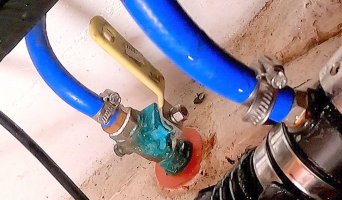Choose "Watch on YouTube."
Dripless troubleshooting, Ray wheel pilot fix, installation of galvanic isolator, sail cover revision.
"Why plumb a sailboat's PSS to a thruhull and hose, when that is not necessary for vessels that don't go fast, like motorboats? Of the three options for PSS installation on sailboats, why choose that one?
"Option 1: no PSS plumbing. Burp unit by hand every launch. However, failing to burp the seal can cause it to burn out. Owners have to be responsible, especially of boats hauled often. They weren't. So "protection" was recommended.
"Option 2: Vent the PSS with an air line, essentially vented loop. This keeps water in the unit all the time and requires no thruhull. However, such a vent hose must rise above the max waterline when heeled. Usually a cable tie used to keep the end of the vent up at cockpit level . However, cable ties fail over time. If such a vent line falls below the waterline, the PSS floods the boat.* According to second-hand conversation with PSS, half a dozen boats were sunk that way, causing service bulletins. Enter Option 3.
"Option 3: Thruhull and irrigation line. This was considered "safer in the long run," because it guarded against owner failure to burp or inspect. And because access is often or usually difficult for shaft seals, especially, I am told for motorboats, and boats with V-drives.
Therefore, PSS for a while recommended all installs use thruhulls and hose to a fitting on the stator.
"Things are less clear-cut today, I am told, and all boatyard policies have drawbacks."
Also indexed in Thelonious blog Table of Contents
*Possible solution in Post #8 here.
Last edited:


